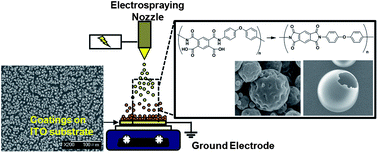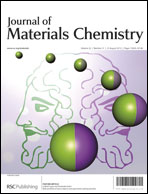Facile fabrication of superhydrophobic coatings with polyimide particles using a reactive electrospraying process†
Abstract
A facile method for polyimide (PI) coating with enhanced hydrophobicity through the deposition of morphology controlled PI particles is presented. An electrospraying process combined with in situ imidization was employed in the fabrication of the PI particles for controllable morphologies as well as hydrophobic multilayered films. We confirmed that in situ imidization accompanying


 Please wait while we load your content...
Please wait while we load your content...